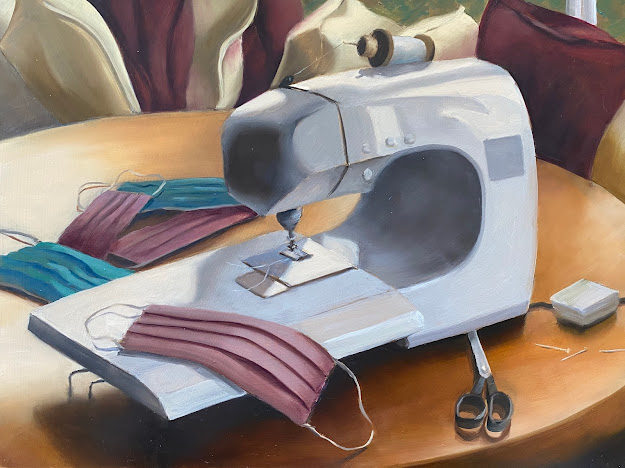Helping From Home
16x12 oil on panel
As the stay at home orders were issued across the country it was stated that our rare trips out would require a mask. The shortage of personal protective equipment immediately became so severe that those whose lives depended on it, health care workers and first responders, were going without. Workers in essential services from grocery store employees to postal workers also needed to wear masks every day and they were in scarce supply.
Brigades of women pulled out their long forgotten sewing machines, dusted them off and got to work. Patterns were shared and how-to videos sprung to life. Heroines like Stephanie Oddo, who organized the Healthcare Mask Collaborative, delivered donated fabric and elastic to a wide circle of people who produced thousands of masks at home and delivered them to medical facilities and military groups.
The juxtaposition of sitting at a sunny table in a quiet house and making masks in the hopes of saving the lives of people on the front lines of a pandemic was startling. I thought of World War II volunteers who helped hospitals suffering from severe shortages, collected scrap metal for reuse and planted Victory Gardens to supplement food rationing. But the United States had built the most stunning consumer society the world had ever seen since that time. We now face overwhelming choices and companies promising to goods faster and cheaper.
How could this have happened?

No comments:
Post a Comment